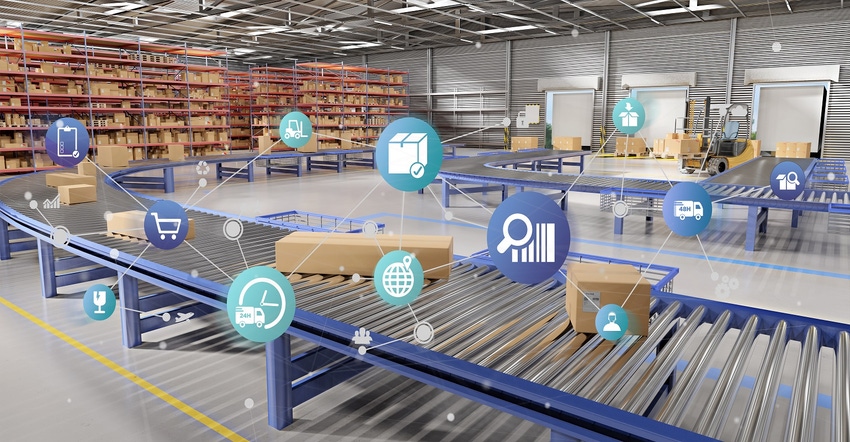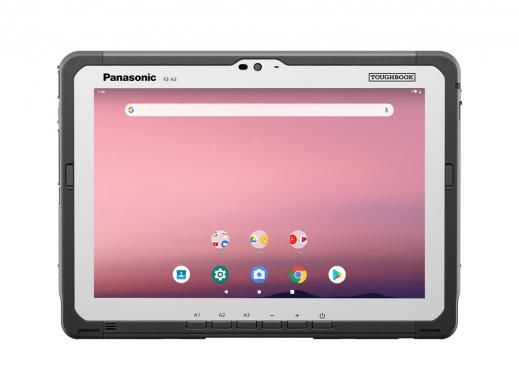Jim Dempsey of Panasonic explains how visibility and speed have become competitive imperatives.
May 4, 2021

The pandemic revealed holes and blockages in both local and worldwide supply chains. Manufacturers have scrambled to improve speed and visibility. You might call it the Amazonification of the supply chain. Amazon has uplifted supply chain efficiencies tremendously, especially during the pandemic. Manufacturers want to match that efficiency. Plus, Amazon has taught customers to expect speed and high visibility.
As the pandemic wore on, manufacturers began to add more automation – both because of labor shortages and because it became apparent their customers expected greater speed of delivery and improved visibility.

We caught up with Jim Dempsey, director of US business development and partnerships at Panasonic, to get his view on developments in manufacturing and its supply chains.
Design News: How has manufacturing and supply chain management changed during the pandemic?
Jim Dempsey: There is an increased need for visibility, and the customer’s expectations changed during the pandemic. It used to be OK if I received my shipment in one or two weeks. Now I can order a toothbrush and get it in two hours. On the manufacturing side, I now have to produce products while also meeting the customer’s demand. There is a big focus on visibility. What is going on in my network? You need a proactive, almost autonomous system. You take input from the sensor and assimilate the data to make decisions. I get alerts that impact our plans. The alerts let me know if we’re hitting our manufacturing schedule. I have to focus on the visibility of the data and the transactions in the system.
So that means companies need to efficiently and effectively optimize the manufacturing workflows while also adapting to changes with speed.
Jim Dempsey: Absolutely. When you’re running a manufacturing plant you want to be as predictable as you can be, schedule labor and supplier. Optimizing workflow, you have a sensor that can be a mobile device where the users are in the truck and the manufacturing plant, they’re scanning things, a layer of sensors, multiple technologies in the IoT journey. You have to enable a smart edge to enable the technology where people collect the data and bring it into a data warehouse.
Some warehouses are still paper, but most are being retrofitted with technology with AI. The data comes into the data warehouse and I begin to triage it. How many people do I need in the warehouse – the put-away process and the picking process. If I can predict when I need that labor, it’s more efficient. Optimizing workflow – voice picking solutions to improve the picking velocity as the product goes from the plant to the distribution center and the distribution center to the store. Now you're seeing two or three items per order. You going to be using picking carts. Put it in a box to the outbound. Voice picking is more natural. The system is speaking like Siri. Go to this aisle and pick this. In that environment and the turnover, training is cut in half with a voice system and I can deal with multiple languages. That’s just one piece in the workflow.
So meeting customer expectations means manufacturers have to provide greater visibility into the supply chain.
Jim Dempsey: Yes, from first to the last mile. You have to break down the silos. There is a last-mile piece. Much of the importance of a transaction is in the last mile. A lot goes into manufacturing and the warehouse, but if you don’t address the last mile, you could lose it. With the internet, if you place an order and you’re dissatisfied, your likelihood of going back is 20%. You know what orders are coming through the plant, so you need to manage your transportation. That’s not easy. There are shortages in transportation. The capacity is being stretched.
To solve it, we’re seeing crowdsourcing delivery systems. It can be Uber or trucking. If they have the capacity, you can send an Uber driver to pick up that package. That’s happening today. People are also experimenting with robots and drones. If there’s more of that, it will take the pressure off the driver shortage. With autonomous vehicles, the person will become a technician rather than a driver.
Design News: What do manufacturers need to do to add visibility and speed?
Jim Dempsey: You have to shift from reactive to predictive and proactive tracking and maintenance models. If you look at manufacturing analytics, you can understand where you are in maintenance. You don’t want to do maintenance ad hoc. You need to track the machinery so you know what is happening and why so you can schedule maintenance.
Your analytics will also help with logistics. You could be hit by a social network influencer who is wearing a pair of your shoes. You suddenly receive a crush of demand. The system reaches into the retail side and takes signals of that and gives the warehouse so they can expect the crunch. Then they send that demand through the supply chain so they can ramp up. If you have a network with the right sensors, you can more effectively respond to the demand from the social influencer.
Design News: Are manufacturers facing new regulations and demands from quality control?
Jim Dempsey: Yes. Much of it is in order accuracy, transportation, and route optimization. Pharma was the first industry to create a pedigree for medicine. Now food and beverage tracks for recall. If there is lettuce with salmonella, you know where it came from down to the field. The last-mile delivery is important as well. All of the data has to be captured so you know that the head of lettuce that came from this particular warehouse was delivered to this specific store. You need chain-of-custody and blockchain security.
Drivers of big trucks need to track the hours they drive. Data keeps track of where they’re traveling and when they need to stop for rest. They have to turn this documentation over to the government. That’s one of the pieces of supply chain transformation. Using technology to meet regulations.
Design News: How does this fit with Panasonic’s laptop and handheld tools?

Jim Dempsey: We talk about how to improve the process. This isn’t a matter of technology looking for a problem. We work at the smart edge with smart devices. Each user in the supply chain is different. People who are picking don’t need a laptop, they need a handheld. If you’re taking a reading, you probably need a laptop. We’re known for our rugged products. Our products are built to last. If your user is at the edge and the tool can’t operate, your data is useless. Our devices are down at the edge, so we have to make sure they don’t fail.
We have voice-picking, forklift data operations, and laptops for manufacturing. A good amount of machinery can be automated, but there is a lot of legacy equipment that needs ports for serial connections. So we make sure you can connect our equipment to the legacy serial ports.
Rob Spiegel has covered manufacturing for 19 years, 17 of them for Design News. Other topics he has covered include automation, supply chain technology, alternative energy, and cybersecurity. For 10 years, he was the owner and publisher of the food magazine Chile Pepper.
About the Author(s)
You May Also Like





